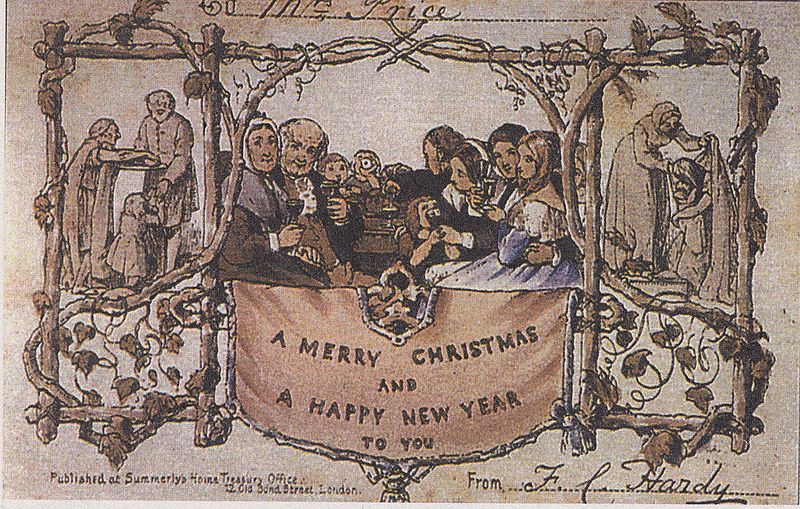Card Writing is a Dying Art
In the age of technology, the eons-old art of writing greeting cards seems to be losing its allure.
John Callcott Horsley, London, Public domain, via Wikimedia Commons
Henry Cole printed 1,000 copies of the first card, and sold each card that he didn’t send to a friend for one shilling apiece. One shilling today is equal to approximately 24 cents.
Dear reader,
Cards hold a special spot in my heart. From as young as I can remember, my family has sent cards to commemorate any and every significant occasion, from birthdays to holidays. In fact, my mom and I often joke about the “card gene” that I seem to have inherited from my dad’s side of the family: we’re all able to find the perfect card for every card-giving occasion there is. No matter what store, or how many days in advance the card is purchased, we manage to find a card with a sentiment perfect for the recipient. I can’t imagine my family without thinking of the cards we’ve sent over the years.
It appears that greeting cards have existed almost as long as paper has: the ancient Egyptians who invented the predecessor to paper – papyrus – would often send each other greetings on scrolls. The ancient Chinese who invented the paper making process as we know it today sent New Year greetings on paper as early as 105 C.E.

Though greeting cards were invented well before the first millennium was over, the first commercially-produced greeting card was only very recently delivered, in 1846. British businessman Henry Cole asked an artist to come up with a Christmas card he could send to groups of friends quickly and efficiently. The idea caught on, and by the end of the 1860s, companies were selling greeting cards left and right.
Why, though, would little colorful slips of paper catch on so quickly? Was it that they were painless to pick out and almost effortless to send? I don’t think so. The correct card always takes a while to find (the color scheme of a card is important, as is its font); even more arduous is writing a message that doesn’t repeat exactly what the card says. If a card is funny, you shouldn’t jam-pack it with get-well-soon wishes; if a card is solemn, on the other hand, you shouldn’t insert a pun into each sentence.
That being said, I’ve both given and received cards whose messages were incongruous with their designs, and each time the mistake was gladly ignored because the message was still heartfelt.
Writing on pen and paper is a dying art. What’s the point? With computers, there’s no reason to spend a year teaching kids how to write elegantly when that time could be better spent teaching kids how to type.
It makes sense, of course. Gone are the days when some people only knew how to write in cursive (as one of my friends told our middle school class about his grandma, much to our disbelief).

But when was the last time you sent a card to a relative or a friend? Was it an obligatory, generic birthday card? Did you even want to? Texting is much simpler, much easier, and much less time-consuming.
When did you last receive a card?
I have a St. Patrick’s day card tacked up on the wall from my Aunt Lois, in the spot reserved for her cards (out of everyone in my family, she’s the most prolific in her card writing). That’s not to mention the four birthday cards I’m so lucky to put up each year: one from my mom, my dad, my granddad, and Aunt Lois herself.
There’s nothing like opening your mailbox, or just coming home, and seeing a card waiting for you. There’s nothing like the feeling you get when you realize someone spent half an hour or more picking out a card for you, and sat at their table deliberating over what would be the most fitting way to tell you that they love you. And there’s no challenge like doing the same for someone you love.
Sincerely,
Felicia Jennings-Brown
Felicia Jennings-Brown is a Copy Chief for ‘The Science Survey.’ What she appreciates the most about journalistic writing is its use as a channel to...

